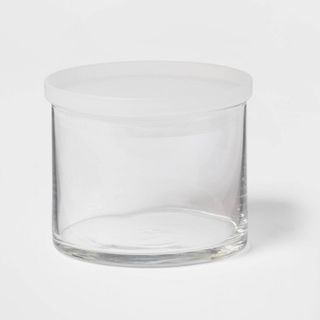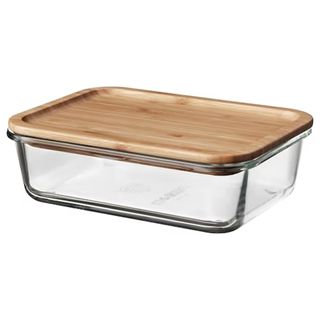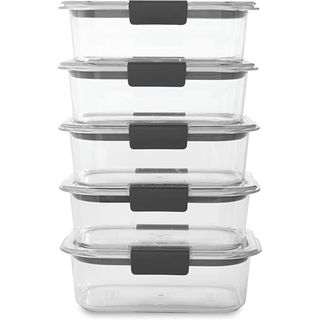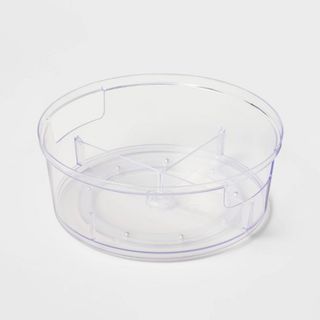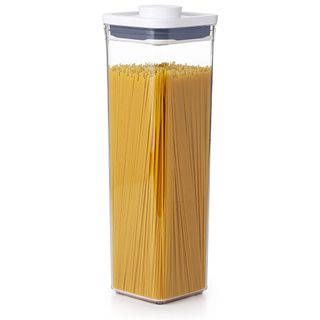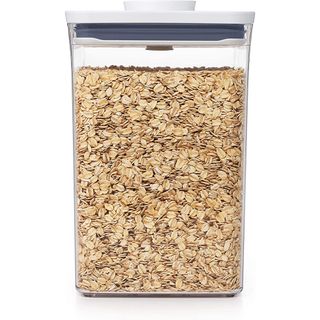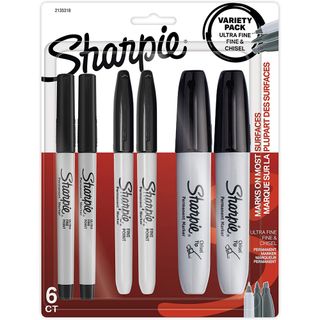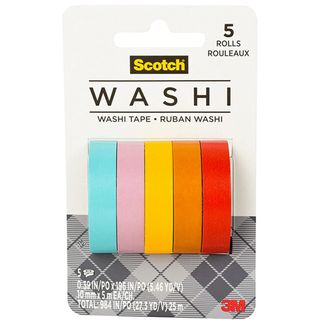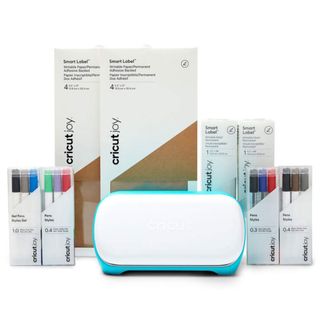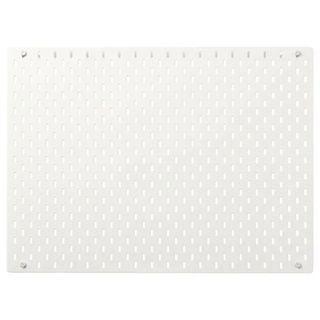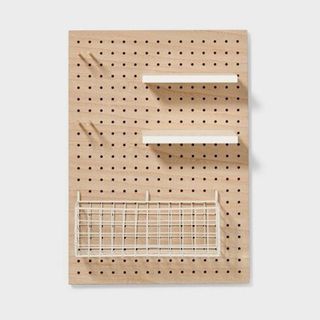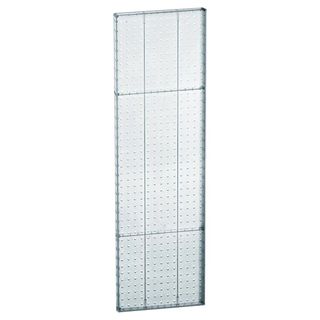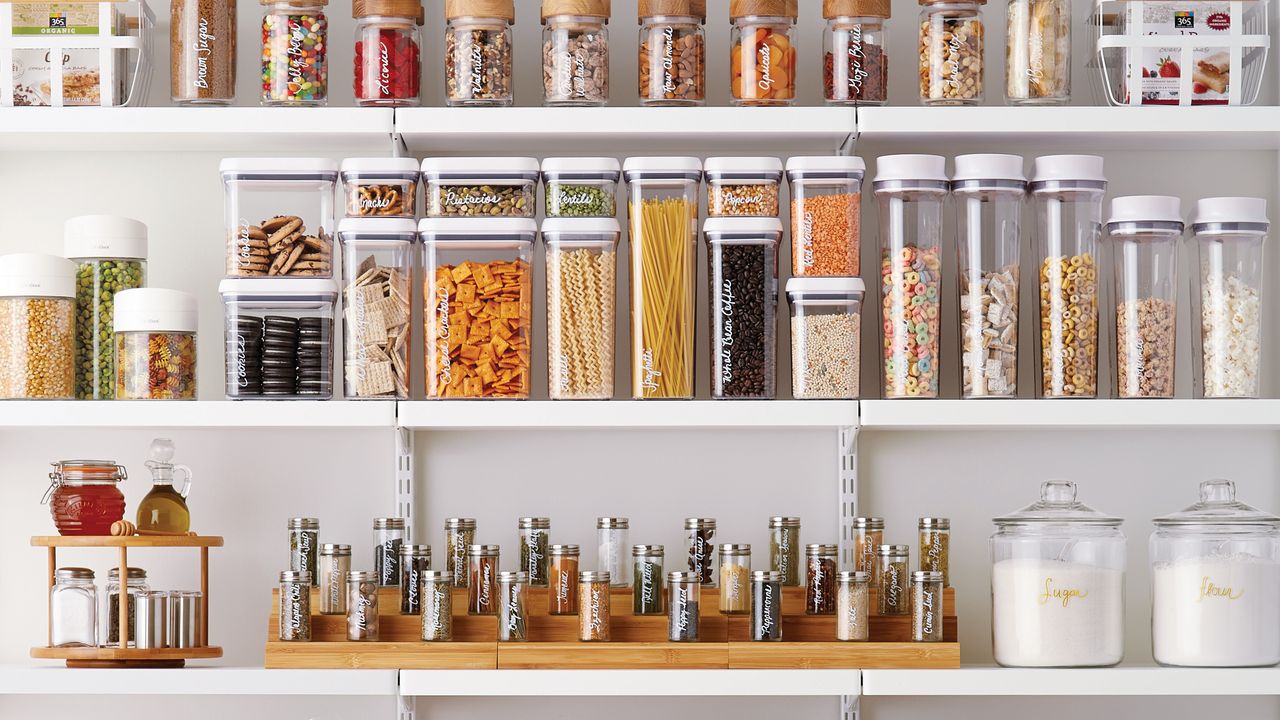
- How to organize a pantry in 13 easy steps
- Start by removing expired products
- 2. Group like categories of food together for easy access
- 3. Edit your Tupperware collection
- Don't overcrowd your space
- Shop only what you have space for
- Don't be shy with organizing tools to max out space
- Remove items from their original container
- Color code your goods
- 9. Subdivide your items efficiently
- Have a ‘first in, first out’ system
- Label your pantry right
- Consider a pegboard
- Make sure your systems are sustainable for the future

Need to organize a pantry? It might seem like a daunting task — but an organized pantry does so much more than aesthetically pleasing bragging rights. It saves money and reduces waste too!
And, it goes without saying that if you're figuring out how to organize a kitchen, the pantry organization (with some pretty pantry storage containers) will give you Queen status in your cookspace.
Think about it like this: taking the time to properly organize your pantry is a triple W— it means more money in your pocket, less expired food going to rot at the back of shelves, and a gorgeous aesthetically-pleasing space that’ll make you excited to meal prep. You don't always need to buy anything either, it's all about working with what you have and thinking outside the box (sometimes literally).
So I’ve rounded up some of the easiest ways to achieve a neat and tidy pantry, from kitchen shelf ideas to the food storage containers to invest in plus pantry organizers you've seen on your FYP. Oh, and I've even chatted to some pros for expert-approved tips that will ensure your pantry will not only look good but will actually help create a system that ensures you can easily maintain your newfound tidy ways.
How to organize a pantry in 13 easy steps
"It pains me to see how many people end up buying things they don't need simply because they can't find it," says Amy Bloomer, founder, and professional organizer at Let Your Space Bloom. "This is especially pertinent when it comes to buying groceries. People will now use what they have because they know where to find it."
1. Start by removing expired products
Expired spices are often cakey and unusable. You’ll want to throw the contents in the trash and recycle the containers. You’ll also want to remove any expired pantry items — tossing them in the compost is the easiest way.
"Even if you think an expired product is still okay, just toss it," says Bloomer. "It’s not worth taking a chance with your health."
2. Group like categories of food together for easy access
To max out on kitchen storage capacity, getting a categorization system in place will help. "Categories that are most frequently used and accessed should be stored all together so one can ‘throw and go," says Bloomer.
"This will also help to reduce the time it takes to put away groceries as you'll know precisely where everything goes."
3. Edit your Tupperware and food storage containers
We’re all guilty of an overflowing collection of plastic containers — but there’s no point in keeping mismatched containers just because you don’t want to put them in the trash.
Bloomer suggests recycling any containers that don’t have matching tops and editing your collection to include only those that are actually used. You can also consider investing in glass containers to ensure a more sustainable pantry moving forward.
I've got a wholllleeee guide on how to organize Tupperware if you're Li'l Miss butterfingers and don't quite trust yourself to own glass just yet.
4. Don't overcrowd your space
For a pantry in particular, it is so important to leave some empty space. "Unlike most spaces in your house, the contents of your pantry are constantly being used and thrown away and refilled," says Brianna Nitsberg, founder and decluttering expert at Simply Life by Bri.
"As such, it is so important to make sure you aren’t overcrowding your pantry, or else you won’t have any room for new foods."
5. Shop only what you have space for
"Going off of my last tip, if you have a small pantry, you have to account for that when you go shopping," says Nitsberg.
"Of course, buy whatever foods you want to eat but be reasonable at the supermarket and keep in mind the space that you have to store this food."
6. Don't be shy with organizing tools to max out space
"Lazy Susans are one of the most fun and functional tools for keeping many spaces organized," says Bloomer.
"Use clear jars and/or containers to store flour, pasta, sugars, seeds, and cereals. This storage strategy helps to prevent spoilage and helps you keep tabs on what items are running low."
7. Remove items from their original container
"One of the most common mistakes we make when organizing the kitchen is putting on display all the food items we tend to use on a daily basis, in their original containers. Whether it’s cereal, nuts, and seeds, cookies, or dry pasta, most of the packaging is not designed to preserve the product inside once it’s opened," says Gabriela Makler, founder of Mumi Design.
"This is why it is so important to use reusable zip-up bags like these from Stasher, made of food-safe PVC which is also lead-free and BPA-free; to store food items in a hermetic baggie made to preserve the original qualities of the food item."
8. Color code your goods
"Being able to assign a color to each item is also a great plus, this way everyone can recognize the color for cookies, cereal, or oatmeal at first glance. In the process, we will be avoiding any accidents and unnecessary messes," says Mekler.
9. Subdivide your items efficiently
Yes, you should group the same items. However, you should also organize them by frequency of use. "Place items you use more often than others in the most accessible spot," suggests Edward Jones, founder of HomeCareHow.
"Next, organize them according to the time of day you use them. For example, arrange your items for breakfast, lunch, and dinner."
10. Have a ‘first in, first out’ system
"A proper ‘first in, first out’ system lets you lessen your waste," says Jones. "Place your older spices, vegetables, and fruits at the front. Then, place your newer food items at the back."
11. Label your pantry right
"You should label your items, especially the ones you’ve transferred in jars and spice containers," says Jones.
"You should not only label the contents but also the expiration dates. Make sure to mark them clearly. You don’t need to spend much but you can do it efficiently by using washi tape and a marker."
12. Consider a pegboard
"I recommend using a pegboard to hang heavy-duty items that take up the most space in your pantry. This item can be used to display different pots and pans along with spatulas," says Benjamin Stenson, CEO of Norsemen.
"The neat display gives it an aesthetic appeal and becomes the center of attention. As pots and pans are distinctly apart from each other, you no longer would have to deal with their clicking and clacking."
13. Make sure your systems are sustainable for the future
Above all, make sure the systems you are creating are sustainable in the long run. "You know yourself better than anyone, so set up your systems accordingly," says Nitsberg.
"For example, try to have easy access to all of your most used items and put those lesser-eaten foods on higher shelves."
How do I section my pantry?
1. Working from the top of this cupboard down, we can see that the organizational magic-makers favor turntables like these from Amazon for smaller items. That way everything’s easy to find and you don’t end up losing items in the deepest recess of your unit.
2. Also key? Clear canisters like these from Wayfair. This way you can see when you’re running out of, say breakfast cereal, so you aren’t left doing a last-minute dash to the shops. The other benefit? Your items stay fresh in air-tight containers so there’s no food waste.
3. And while we’re talking clear containers, The Home Edit ladies love clear bins like these from The Container Store. You can group items in them, and you can pull them out just like a drawer.
4. At the bottom of this pantry is another Home Edit favorite: baskets like these from IKEA. These do a similar job to the clear bins, but they also help make your pantry or cupboard look good, and Clea and Joanna have aesthetics in mind as well as order. Why shouldn’t your pantry storage be bougie?
Join our newsletter
Get small space home decor ideas, celeb inspiration, DIY tips and more, straight to your inbox!

Hi, I'm the former acting head ecommerce editor at Real Homes. Prior to working for the Future plc family, I've worked on a number of consumer events including the Ideal Home Show, Grand Designs Live, and Good Homes Magazine. With a first class degree from Keele University, and a plethora of experience in digital marketing, editorial, and social media, I have an eye for what should be in your shopping basket and have gone through the internal customer advisor accreditation process.
-
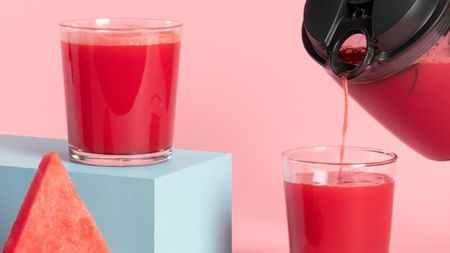 How to clean a juicer — get yourself out of a sticky sitch with our 5-step guide
How to clean a juicer — get yourself out of a sticky sitch with our 5-step guideCleaning a juicer to get rid of carrot, apple, and orange bits couldn't be easier with this guide that'll get it gleaming in 10 minutes
By Christina Chrysostomou Published
-
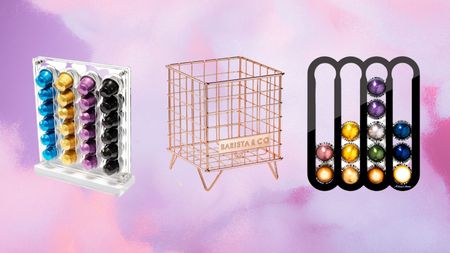 9 genius on-trend coffee pod storage buys to keep your countertop tidy
9 genius on-trend coffee pod storage buys to keep your countertop tidyAchieve that #CoffeeTok aesthetic in an instant with these coffee pod storage buys that will keep your countertops clutter free
By Christina Chrysostomou Published
-
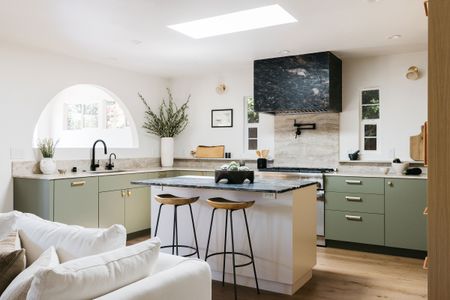 6 items you should never store under the kitchen sink, according to a professional organizer
6 items you should never store under the kitchen sink, according to a professional organizerA professional organizer let us know what doesn't belong under the kitchen sink, and where to put these common items instead.
By Kate Santos Published
-
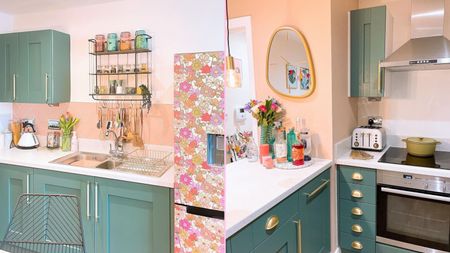 How to organize a kitchen, in just 7 steps
How to organize a kitchen, in just 7 stepsWe show you how to organize your kitchen for long-term success, no matter how small your cooking space...
By Kaitlyn McInnis Published
-
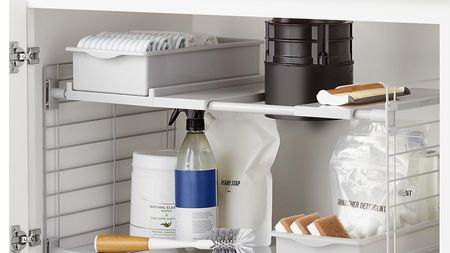 14 ways to organize that nightmare space under the kitchen sink, according to experts
14 ways to organize that nightmare space under the kitchen sink, according to expertsWondering how to organize under the kitchen sink? Decluttering experts share their top tips for neat and tidy storage.
By Christina Chrysostomou Published
-
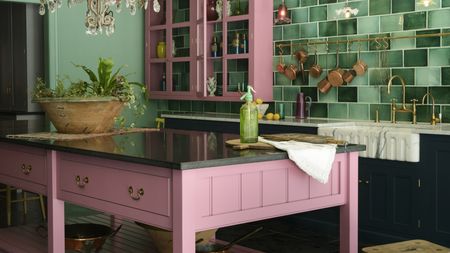 How to clean copper: 9 ways to restore shine to pans, sinks, and jewelry naturally
How to clean copper: 9 ways to restore shine to pans, sinks, and jewelry naturallyLearn how to clean copper using ingredients already in your kitchen
By Anna Cottrell Published
-
 How to clean an electric kettle using a descaling solution, plus 6 eco-friendly cleaning hacks
How to clean an electric kettle using a descaling solution, plus 6 eco-friendly cleaning hacksThis is how to clean an electric kettle properly. Descale yours using natural ingredients like vinegar for quick results to keep it functioning and prolong its lifespan
By Christina Chrysostomou Last updated
-
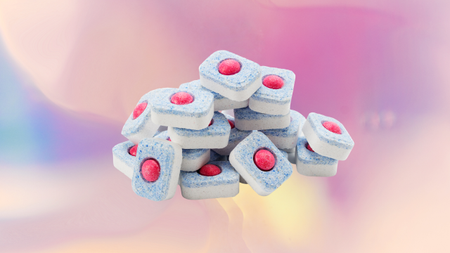 Dishwasher tablet hacks: 15 money-saving ways to clean with dish tabs
Dishwasher tablet hacks: 15 money-saving ways to clean with dish tabsBought too many tabs? These dishwasher tablet hacks are handy for when you've got a glut of cleaning capsules to hand
By Christina Chrysostomou Last updated
